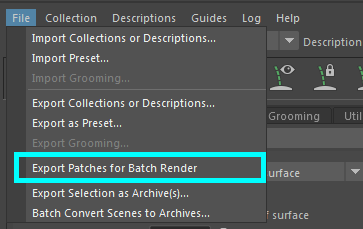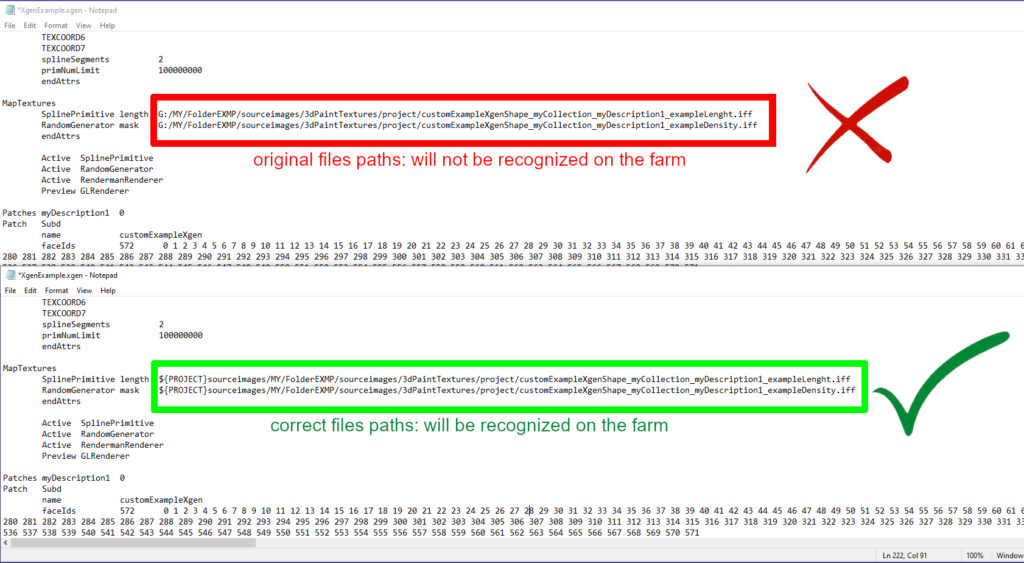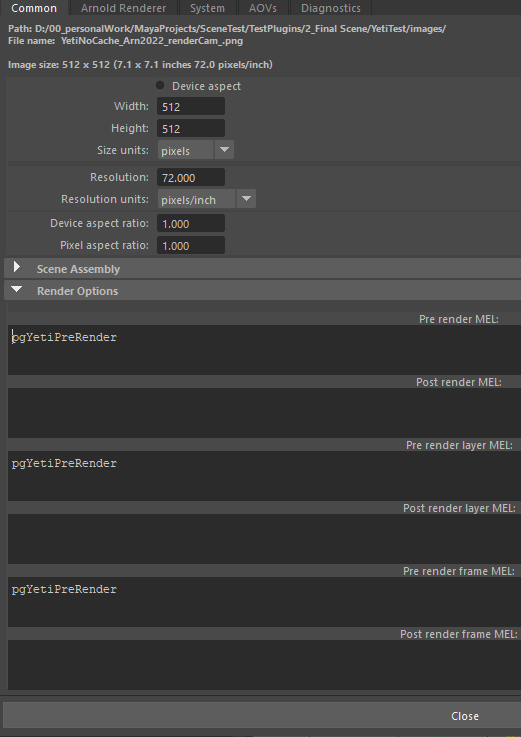Furs
You will find on this page, the processes to render your furs with XGen and Yeti
XGen
Using Xgen in your scene requires a few steps to render your fur properly.
Before sending your scene on the farm which contains XGen features, please make sure to:
- Create the .abc files by clicking on “Export Patches for Batch Render” in the XGen tab> file.
If your simulation is animated, enter the desired frame range.


You can now create the .vua archive with our plugin RANCHecker V5.
To avoid any trouble while using the job name parameter, please save your scene with 20 characters maximum, before exporting patches for batch render.
- Check if the .vua archive contains:
- All the files collectionName.xgen in the scenes folder
- All the files collectionName.abc in the scenes folder
- The correct scene name
- The “xgen” folder at the root of the .vua file, with all your collections and files inside

If something is missing accidentally, you can still add the assets manually inside the .vua archive, at the correct location.
- Check paths
Check if all the paths inside the .xgen files have been changed automatically to match the farm render path.
The xgProjectPath parameter must indicate the following path: C:/Maya/CurrentJob/
and the texture map XGen mask must indicate: ${PROJECT}sourceimages/…/the file path inside the .vua/…/yourfile.iff

XGen Interactive
Xgen Interactive Groom works on the farm without the previous steps because they do not require the xgen folder.
Yeti
Workflow
We highly recommend to use fur caches instead of live fur. Since RANCHecker V5.1.1, Yeti caches are automatically gathered.
For previous versions, please do the following steps to be sure that your Fur will be rendered properly.
- In your scene, set “Input Mode” to “cache”
- RANCHeck your scene and DO NOT click on “Submit” button
- Open the .vua with an archive manager(for example 7zip) and drag and drop your furs in the “cache” folder (if it does not exist create it)
Special Case
Arnold :
If you want to render without caches with Arnold, be sure to have write in Render Settings > “Common” tab > “Render Options” the command line pgYetiPreRender in the 3 following fields:
“Pre render Mel”, “Pre render layer Mel” and “Pre render frame Mel”.

Compatibility
For the moment, Yeti is only compatible with Arnold, Redshift and Renderman on our farm.
For Vray, please contact us at contact@ranchcomputing.com, so we can provide you the best solution for your needs.

